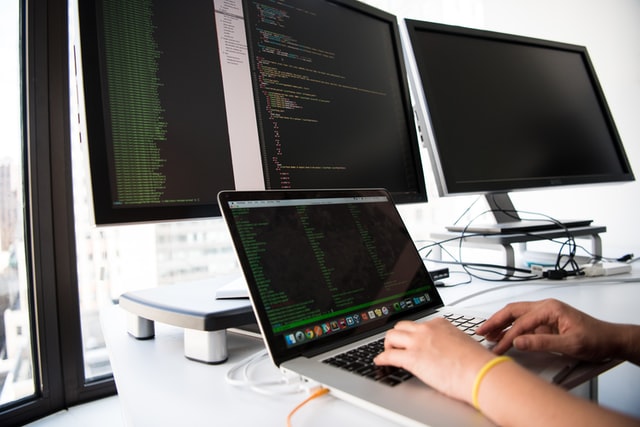The IoMT (Internet of Medical Things) market is expected to grow to an estimated $160 billion in the year 2022 according to a report released by Business Insider. This shows a clear and massive leap from the reported $41 billion valuations in 2017.
This report follows up the report which was previously published in June 2019 by Business Insider. In that report, the analysts had estimated that by the end of 2020 the install base of IoT devices in healthcare will reach up to approximately 160 million units. This supports a general belief that the increase in this IoT adoption trend is unlikely to abate any time in the near future.
The IoT devices have become permanent fixtures of the healthcare industry both in and out of hospitals. This enables stockholders ranging from insurance providers to medical professionals to gather more important and useful data to help them make smarter decisions.
However, with the expansion in the collected data, there is an acknowledgment across the industry that more tools are required to help these organizations garner more actionable insights from their data, enforcing them to seek out data analytics software solutions that will help their teams envision this vast desert of data.
Impact of IoT on Healthcare
The joining factors of smarter sensors and high-speed connectivity and the increase of inexpensive devices have helped the IoT health services to bring these benefits to the majority of people.
Apart from assuring our wellness the devices like Fitbits help to provide a large amount of data indicators about our health. A large segment of the IoT healthcare market is being captured with the help of these industry-approved medical devices. With the growth in these types of devices from specific solutions to wearable devices for monitoring the health of the patients with health complications like heart problems or diabetes etc., the medical professionals are provided with a sea of data to predict and track our health outcomes.
The hospitals are replacing their manual processes with these devices for the purpose of bringing technology to healthcare facilities. This includes the documentation and collection of a patient’s vital data so that they can detect any type of deterioration in his/her health. By doing this the staff is provided with the ability to take necessary and preemptive action.
Apart from its implementation in medical facilities, there has been a top growth in the IoT segment in the monitoring of telemedicine at home. The trips to the hospitals or clinics are also minimized with the help of the data provided by these devices which provide value along with services that monitor medication consumption.
As with most of the technologies that provide benefits to the world, the IoT’s implementation into the healthcare industry does not come without its difficulties.
Challenges Faced by Working with the Data Collected from IoMT Devices.
Due to the ever-increasing amount of data, the healthcare facilities have found themselves with much more data than they can handle and most of them are not prepared to take advantage of the potential benefits it provides. That is why these institutions are facing a wide range of challenges that they should overcome as soon as possible because the IoT has a very important and increasing role in how they operate.
To begin with, the professionals in the medical facilities need to deal with a wide variety of devices that are interconnected. On average, there are approximately 14 to 16 connected devices besides a typical bed inside a hospital. These are a lot of data inputs that are producing more and more data and need to be directed and connected properly.
Zooming out, data can be highly distributed between multiple teams, devices, and locations, with each needing to be serving and accountable for the needs of the patient. This can be very complex when a patient has devices that he is using at home and at the clinic, each one sending on data to different departments at his respective health facility. Mismanagement of data can mean that crucial information about the patient can be overlooked, severely impacting their doctor’s ability to provide the finest, potentially life-saving care.
The shortage of employees that are trained to work with such data analytics is the biggest challenge that is faced by the healthcare industry. According to a survey of healthcare professionals in 2019, the biggest hurdle for analyzing data for predictive analytics is the shortage of qualified team members.
The organizations that have the staff for data analysis also face some problems due to lack of the tools required to work flawlessly with the given data which results in seeking out new data analytics software solutions.
Data Overload Driving Demand for Healthcare Data Analytics Solutions
At first, most of the difficulties will fall on the IT teams at the healthcare facilities in order to manage the IoT integration. They have to handle the configuration and implementation of the existing systems. But this is not the real problem, the real difficulty starts when these organizations have to make sense of the overflowing data that keeps on coming.
The most common complaint that healthcare facilities face is the overflow of data they collect and their inability to get valuable insights that they require. These teams need tools in order to analyze this information as the technology and the incoming data is new to them.
To gain a better understanding of the operating of their institutions, the stakeholders and the medical professionals are seeking the help of IoT devices which are powering the newly found capacity for wide-scale analysis and collection of data. The goal here is not only to know what to do about the data in the present but also to utilize this data to predict the future.
For the executives of the healthcare industry, the importance of predictive analytics is increasing continuously. According to a survey by the Society of Actuaries, over 93% of the health service providers said that it is very important for their business to have predictive analytics.
These business executives are also backing their talk with the plan for the capital to move forward. Around 62% of these executives responded that they are willing to invest at least 16% of their budget into predictive analytics for the period of the next five to six years.
When we Drill down into the details of these capabilities, the visualization of data was rated as the most necessary step for the respondents in what they are searching for in their predictive data analytics solutions. This even beats the trending technologies like Machine Learning (24% to 17%).
Future of Data Analytics
According to some researchers, the Healthcare BI is expected to reach a value of approximately $10.5 billion by the end of 2025, hopefully providing more dollars and revolution towards the improvement of the available technology. This will most likely open the doors to more startups and increased investment from corporations.
As IoT continues its walk into more phases of healthcare, organisations are going to need to seek out more solutions that will allow them to harness the collected data into something that becomes usable for healthcare executives.
Given the resources that look to be behind the development of these new technologies, we can hopefully have plenty of powerful options to help drive higher quality data analysis over the coming years.



